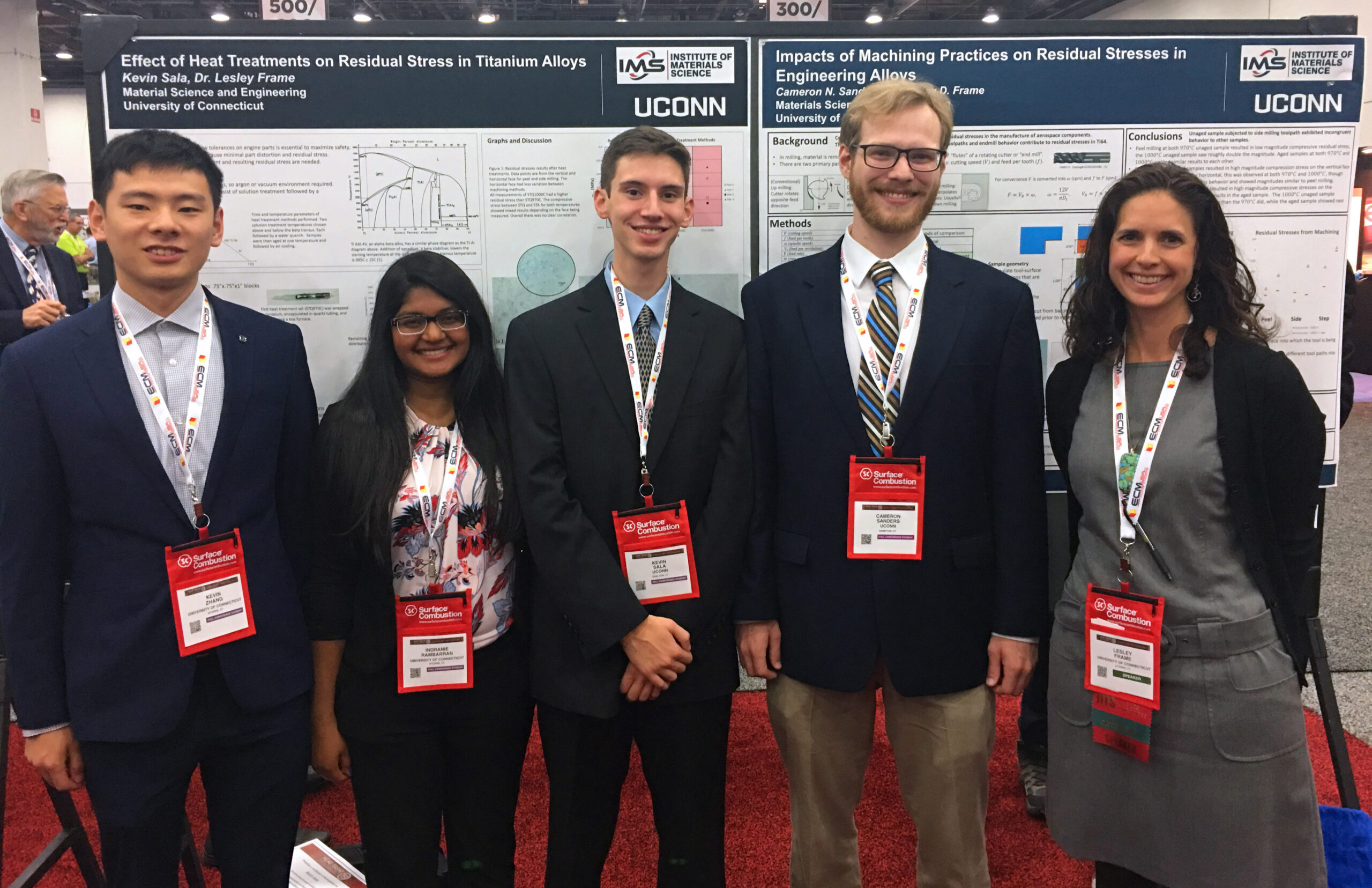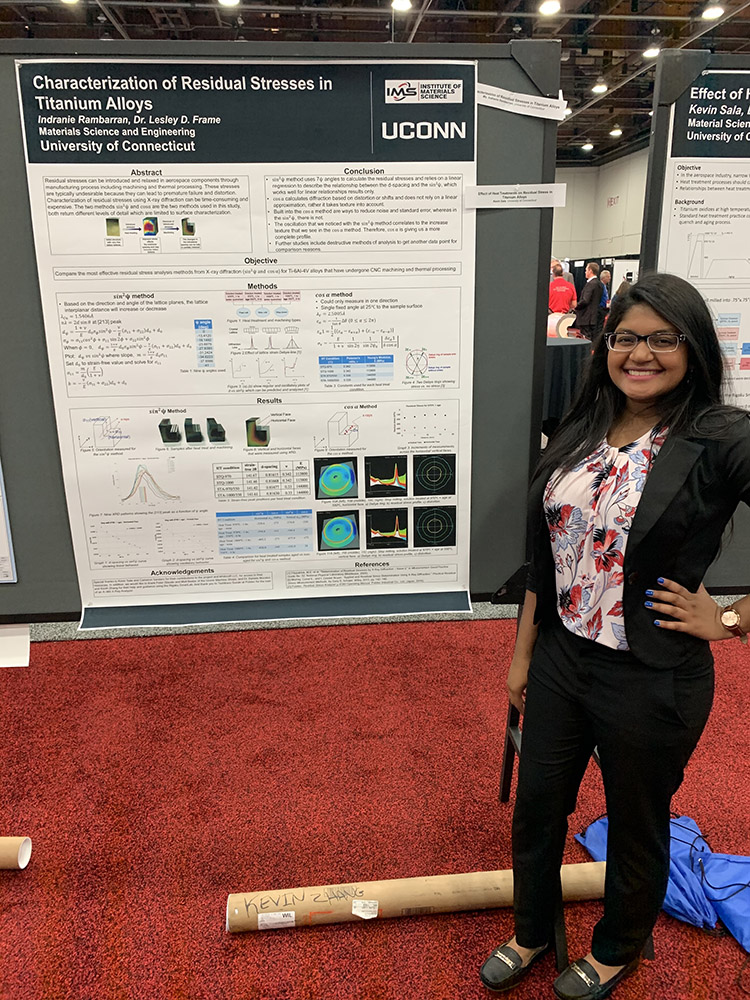MSE Senior was One of Two Undergraduates Nationwide to Present in Advanced Round of Heat Treat Society Competition

UConn MSE representation at Heat Treat 19. From left to right: Kevin Zhang (PhD student), Indranie Rambarran (MSE Senior), Kevin Sala (MSE Senior), Cameron Sanders (MSE Senior), and Professor Lesley Frame (Assistant Professor in MSE).
By Ben Crnic
Four students represented UConn MSE in the Fluxtrol Student Research Competition at Heat Treat 19, an event in Detroit organized by the Heat Treat Society (HTS) Technology and Programming Committee. Seniors Indranie Rambarran, Kevin Sala, and Cameron Sanders, as well as 2nd year Ph.D. student Kevin Zhang, each presented posters of their research to international professionals in thermal processing from both academia and industry.

Indranie Rambarran, MSE Senior, presents her research poster in the Fluxtrol Student Research Competition at Heat Treat 19.
Indranie Rambarran was one of six students selected by the panel of judges for the semi-finalist round of the competition, and one of only 2 undergraduates who made it this far from the entire nationwide field. In her ensuing oral presentation, Rambarran presented research she is conducting with her advisor Lesley Frame. They are focusing on examining residual stresses in a Titanium alloy (Ti 6Al-4V) following heat treating and machining. It is crucial to understand such stresses especially because such titanium alloys are widely used by the aerospace industry. Undesirable residual stresses can result in premature failure of critical parts. “Residual stresses are notoriously difficult to measure accurately, and Indranie’s hard work over the summer allowed her to identify ways to reliably measure these stresses in the experimental samples,” says Frame.
Her presentation focused on comparing two methods of characterizing the residual stresses. Rambarran first spent a summer collecting X-ray diffraction measurements on the Rigaku SmartLab at the UConn Tech Park. She then spent the fall 2019 semester collecting measurements with a Pulstec X360s X-ray analyzer. The Rigaku used the sin2ψmethod, while the X-ray analyzer used the cos α method. She then compared the two approaches to determine which one measured stresses most effectively.
Rambarran discovered that the cos α method allowed more accurate measurements of residual stresses in the titanium samples than the sin2ψ method. This is partially because it takes the texture of the material microstructure into account.
“I would personally like to thank Dr. Frame because without her, none of this would have been possible! Although I did not win the final prize, making it as far as I did was enough for me to know my research meant a great deal,” Rambarran said.
“I am thrilled that UConn made such a good showing at Heat Treat 2019 and I am very proud of Indranie. She was up against Ph.D. students presenting their dissertation research and she did very well in the final presentation round,” says Frame.
Published: February 17, 2020
Categories: conferences, news, research, undergraduate students
Available Archives